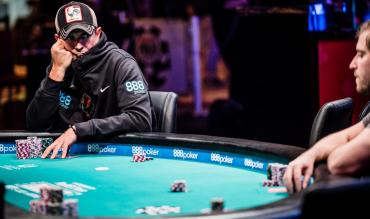Table of Contents
What is Call Station in Poker
Call Station: A player who finds it difficult/impossible to make laydowns. Play is characterised by a large amount of calling, especially with weak and marginal holdings that should clearly be folded.
It should be evident from the definition that calling stations are not good poker players. Folding is an essential discipline in poker. Knowing when to fold separates the losers from the big winners.
Despite this, calling stations are not always the easiest opponents to play against. This fact is especially true if our default gameplan involves bluffing at a high frequency. Calling stations can make short work of players who bluff a lot.
So, what is the best approach to beating opponents who never fold? Here are our top tips.
Tip 1 – Don’t Bluff! Ever!
It might seem that bluffing in a specific spot makes sense. But when our calling station opponent makes a crazy Q-high call-down to scoop the pot, we realise pretty quickly that it wasn’t a great idea.
An necessary adjustment is to shut down all bluffs when facing calling stations.
Tip 2 – Value Bet Relentlessly (Don’t Slowplay)
The key concept here is that we generate a good winrate against calling stations by making hands and value-betting relentlessly.
We know that our opponent is going to be routinely paying off our value-bets. Therefore, it becomes a big mistake not to bet when we have a strong made hand. We should avoid the tendency to slowplay against calling stations, however tempting.
Tip 3 – Value Bet Thin
If we were to wait for strong holdings purely, we’d be playing a somewhat tight and passive style of poker. Contrary to popular belief, we actually want to play somewhat aggressively against calling stations. We merely need to make sure we choose the right types of holdings.
Bluffing is clearly not an option, so we replace those bluffs with thin value bets. “Thin value” implies that the value hand is not overly strong. But we still believe that we can get paid off by enough worse hands for a value-bet to be profitable.
One example might be making a value-bet on the river with a second-pair type holding. Perhaps we’d typically check this hand when facing a good opponent. However, we know a calling station is capable of paying out with bottom pair and even some high-card type hands.
>>>INSERT IMAGE: Image of player holding Ad10d betting a board of 7s-10s-Kh-2d-3s. <<<
Tip 4 – Be Wary of Aggression
Most calling stations are passive. They are unlikely to take aggressive lines without strong made hands. However, this generalisation is not universally true, of course. Some calling stations also like to bluff, but the typical calling station mostly just checks and calls.
As such, when a passive calling station starts betting and raising into us, it makes sense to give them credit. They probably have us beat.
This specific tendency actually makes it even easier for us to value bet thin on the later streets. If our calling-station opponent had us beat, there is a possibility he would have raised on an earlier street.
Tip 5 – Depolarisation on Earlier Streets
Playing “purely for value” might give us the idea that we need at least a pair on the flop to commence betting. This play is not entirely true, even against calling stations.
It’s entirely possible to bet some of our non-made hands on the earlier streets. We just need to be smart in the way we go about it. Betting 6-high gutshots still doesn’t make a large amount of sense, since it’s bad for us when our opponent can’t fold his ragged Q-high.
If we bet draws, we’ll typically use those with some measure of showdown value. For example, it can still easily make sense to bet both the flop and turn with AQ on the KT5 rainbow, if we know our opponent is a calling station.
Not only can our opponent call with a wide range of worse hands, but we inflate the size of the pot for a big payout, in case we hit.
Adjusting to Individual Opponents
Although the default profile for a calling station is loose and passive, there is only so much we can do in the way of generalisation. We might run into a calling station who also likes to bluff-raise a lot.
Although this might not be especially common, we should watch our calling station opponent, carefully, in an attempt to deduce when appropriate adjustments are incentivised. By default, we fold a lot when a calling station raises us, but, in some instances, we may need to adjust this.
Another more common tendency, which some calling stations exhibit, is over-valuing made poker hands. For example, they might raise a weak top pair on the flop looking to play for 100bb stacks.
We’d perhaps make a note along the lines of “any top pair is the nuts for this player” and make sure that we don’t fold top pair with a decent kicker in the future.
Am I a Calling Station?
For those making use of tracking software, a couple of quick checks can be done to ensure we are not paying out too wide.
Check the red line (non-showdown winnings) on our graph. A common indicator that we might be calling too wide is a rising (positive) red line. Although winning players sometimes have positive red lines for entirely different reasons, most calling stations have positive red lines also.
Check our river fold to c-bet stat. It usually makes sense for a lower limit online player to have a “river fold to c-bet” stat in the 60% region. This statistic is partly due to the fact that the average low limit opponent does not bluff rivers often enough.
If we see our fold stat is 50% or lower (over a decent sample), this percentage is a reasonable indicator that we are paying out too wide against bets.


